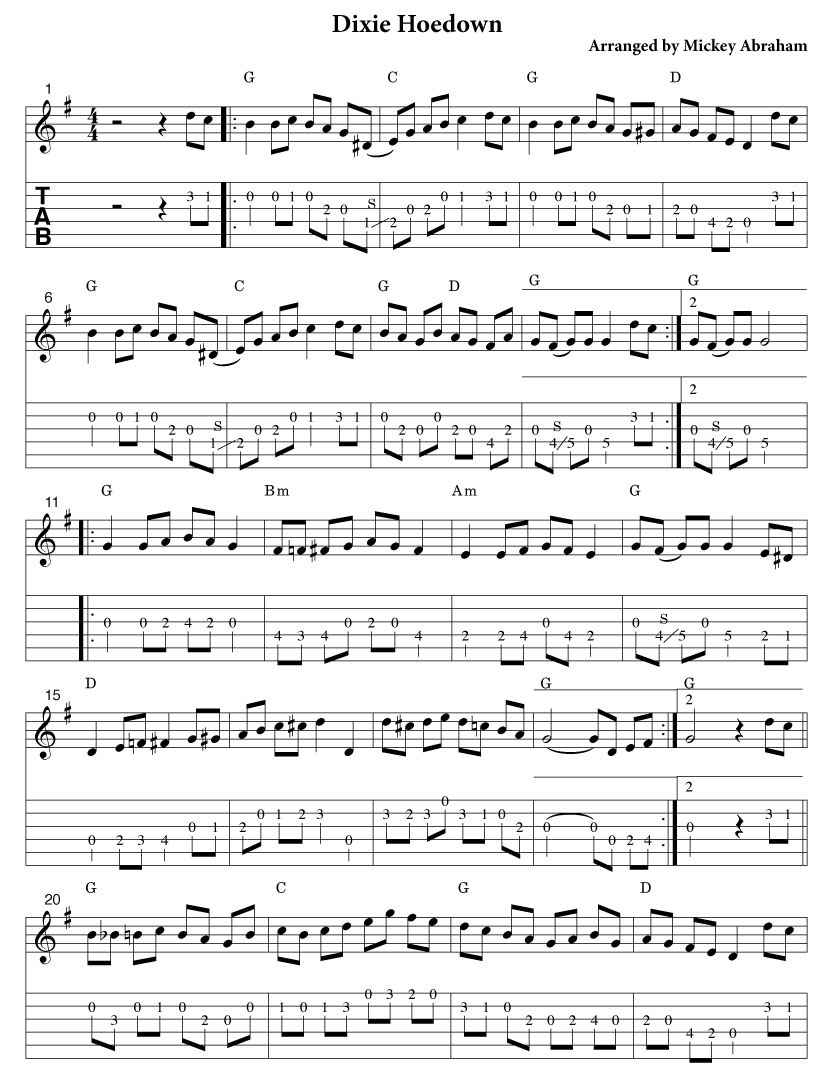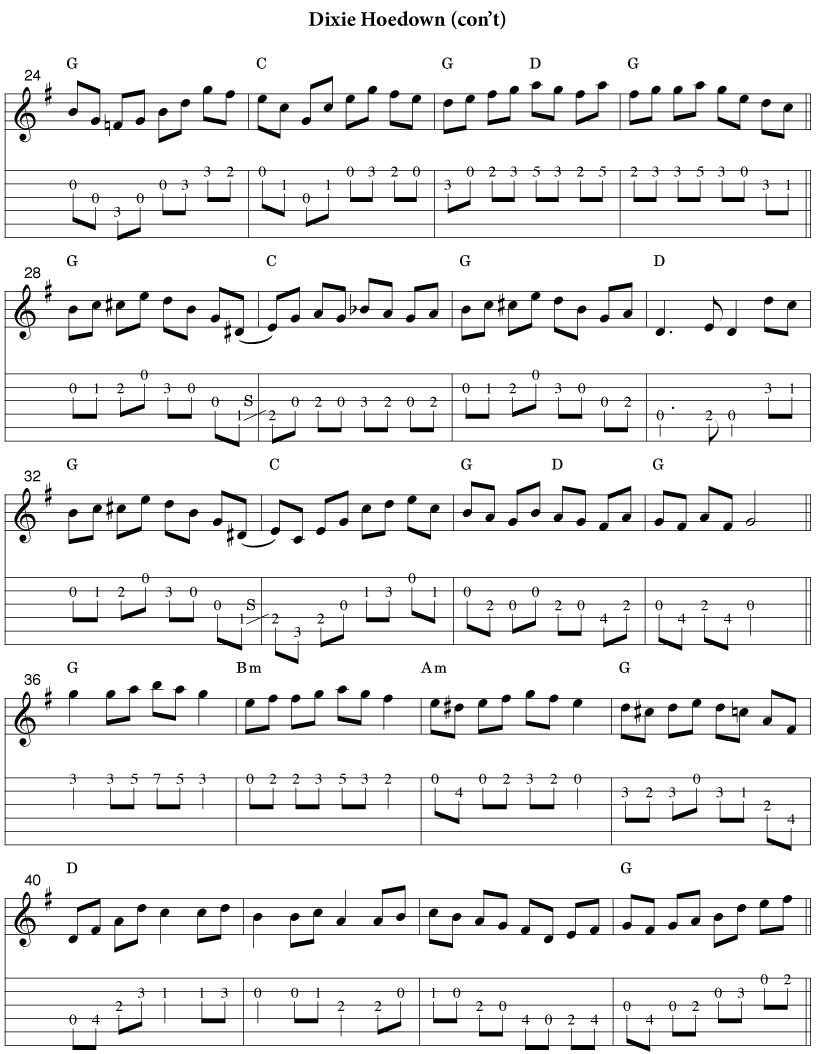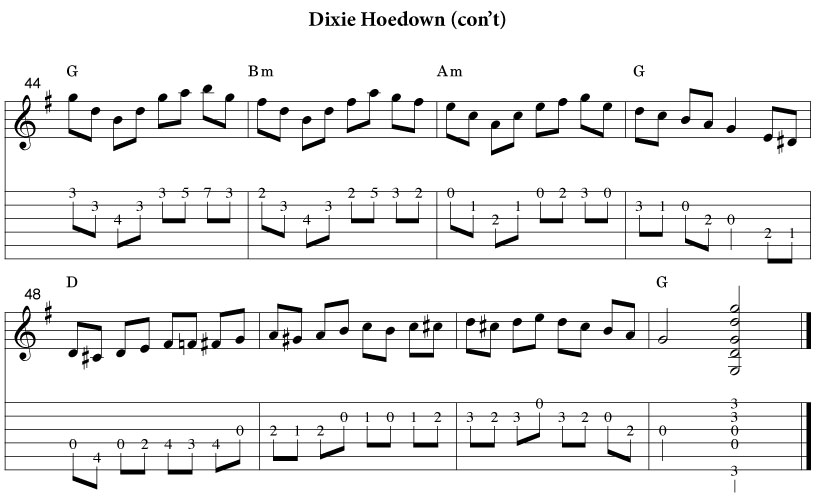Flatpicking Guitar MagazineFree Email Newsletter LessonApril 2015“Dixie Hoedown” arranged for Flatpicking Guitar Magazine by Mickey AbrahamDOWNLOAD PDF / DOWNLOAD mp3
Hello and welcome once again to Flatpicking Guitar Magazine’s free lesson portion of our monthly newsletter. This month I come to you with one of my all time favorite flatpicking tunes, the “Dixie Hoedown.” The great bluegrass mandolin pioneer Jesse McReynolds certainly had the right idea when he came up with this number. It’s got straight forward chords, a memorable melody, and recognizable fiddle tune form. For these reasons it is no mystery why “Dixie Hoedown” is called at many jam sessions and is continually at the top of many picker’s list of favorite tunes.
For this lesson I have included two passes of the tune. First, a beginner version of the melody and then a longer version full of cool variations. If you already play this tune I encourage you to take a look at the variations as you may find a cool lick that you can insert into your already existing versions.
When I first learned the chords to “Dixie Hoedown” I was told that the “B” section goes from a G chord to a B7 and then to a C. Although this is a really nice change (reminiscent of “Old Home Place”) I have, over the years, come to realize that the “B” section chords are actually G to Bm to Am. Most people’s melodies work over both of these sets of chords. I feel the reason why some folks might use B7 instead of Bm is because traditionally folk musicians didn’t know a Bm chord! Bm is usually voiced as a barre chord whereas B7 is a more typical “folk” chord.
On a similar note, the original version of “Dixie Hoedown” has two slightly different “B” sections -- B1 and B2. The difference being how long the back-up player holds the D chord. The melody is in fact different over these sections. Many disregard this aspect of the tune when picking it a jam session. Over time the “B” section has become the same for the repeat and the melody variation is lost. Real bluegrass guys know what I’m talking about while some of you might never have noticed this minor variation in “Dixie Hoedown.” See the below example that further illustrates this minor variation.
Ex 1. last four measures of the B section
original:
B1 D D G G
B2 D D D G (note they are one chord different)
jam version:
B1 D D D G
B2 D D D G (note they are both the same!)
Most jam sessions will use the easier chord pattern and this is why my lesson arrangement follows the common jam session version.
For those of you who follow my e-lessons you will you note how I often stray from filling up fiddle tune variations with a bunch of hot licks. Nothing personal against hot licks, but to me, the challenge is to create smooth lines in open position that are artistic, melodic, and compelling. It would be easy (and fun) to plaster Tony licks all over the A section but these lines might open your ears to some new ways of outlining G, C, and D in open position. Remember to click on the included lesson mp3 to hear all these ideas in action.
I hope you enjoy working on “Dixie Hoedown.” As always, if you have any questions or comments on this e-lesson just drop me a line at [email protected]



|
|
|